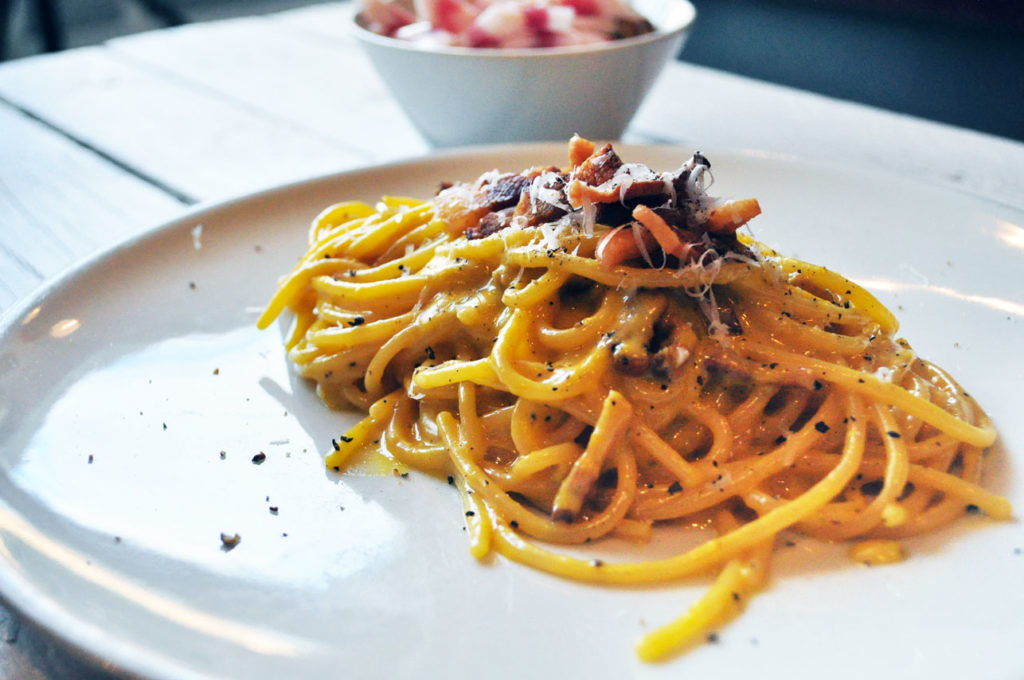Carbonara pasta: originally American, Italian by adoption.
Creamy, scented and juicy: whatever the interpretation is -be it classic or gourmet-, whenever we talk about Carbonara pasta we talk about Rome, its alleys and the festive din made by its people gathered in local trattorias.
Yet, looking back on the past, in the “Talismano della Felicità” (the gastronomic bible of Roman culinary traditions) Carbonara is not even mentioned. It was the ‘30s, and gastronome Ada Boni did not include the recipe in her book: why?
Grapes, cheese and…bacon: when Americans met the “cacio e ova”
We searched through “La Cucina Italiana” collectible issues and we found out the first mention of Carbonara dates back to the end of ‘40s, in a version with gruyere, garlic and parsley.
It was maybe an attempt made to make “Italian” a recipe that was becoming increasingly popular in the postwar period, created in battlefronts.
Allied forces, on Reinhard Line (among Latium, Molise and Campania) grew fond of “cacio e ova” pasta, a typical recipe from Central Italy, with pecorino cheese and fresh eggs.
Soldiers, who loved bacon, dared to add dried bacon, included in their daily ration; in its absence, local pork cheek lard would replace it.
Thus Carbonara pasta was born, an amazing example of a culinary melting pot. Its name is probably a homage to Appennini’s woodsmen, meaning a version 2.0 of “cacio e ova”.
Spaghetteria and Carbonara: in PummaRe, you can taste the perfect creaminess
PummaRe proposes the best traditional recipe, with Amatrice pork cheek lard, freshly ground black pepper and Black rind Brunelli Roman pecorino cheese: pulled, salty, dry-salted. A delicious seasoning, perfectly balanced with our selection of handmade high-quality pastas: from Gragnano to Mancini and Dei Martelli pasta factories, bronze-drawn and porous pastas, practically perfect in every way.


